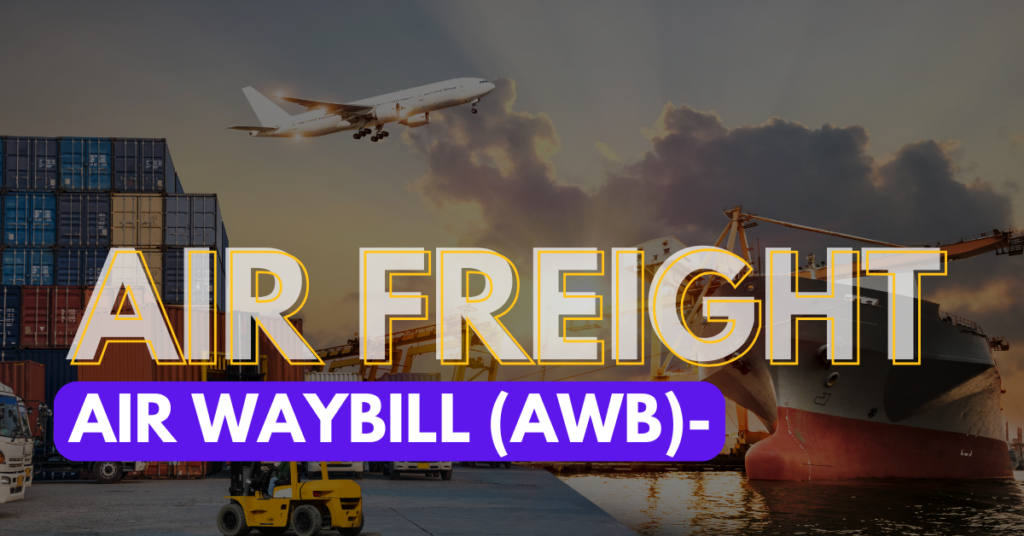
An Air Waybill (AWB) is a crucial document in the realm of international trade and logistics. It serves as a contract of carriage between the shipper and the carrier, typically an airline. This document is essential for transporting goods by air and contains vital information regarding the shipment.
Master Waybill (MAWB):
The term “Master Waybill” is often used in the context of air cargo. It refers to a single AWB that covers multiple shipments bound for different destinations. This consolidated document simplifies the handling of various shipments under a single master document, making it more convenient for both shippers and carriers.
Is the Air Waybill and Bill of Lading same?
While both the Air Waybill (AWB) and Bill of Lading are transport documents, they differ in the mode of transportation. The AWB is specific to air cargo, whereas the Bill of Lading is utilized for sea or ocean shipments. The AWB serves as a receipt of goods and a contract of carriage for air transport.
Difference between Master Air Waybill And House Air Waybill:
- Master Air Waybill (MAWB): This document is issued by the main carrier and covers the entire shipment from the originating airport to the final destination. It serves as a master contract for the entire journey and is used when multiple House Air Waybills are issued under it.
- House Air Waybill (HAWB): These are associated with specific shipments within the consolidated cargo covered by the Master Air Waybill. HAWBs are issued by freight forwarders or consolidators and include details of individual consignments within the consolidated shipment.
Waybill vs Consignment:
The terms “waybill” and “consignment note” are often used interchangeably, but they have distinct meanings:
- Waybill: A waybill is a document issued by a carrier that provides details about the shipment, including the description of goods, quantity, and destination. It serves as a receipt of the goods and a contract of carriage.
- Consignment Note: This document is more comprehensive, encompassing details about the sender, receiver, and the goods being transported. While a waybill is a type of consignment note, the latter includes broader information related to the entire consignment.
Air Waybill Tracking: Ensuring Shipment Visibility
Air waybill tracking is a crucial feature in the logistics industry. Shippers and consignees can trace the status and location of their shipments in real-time using the unique AWB number. This enhances transparency and allows for better planning and coordination in the supply chain.
Air Waybill Meaning: Decoding the Document
The Air Waybill holds immense significance in international trade. It serves as a legally binding contract between the shipper and the carrier, detailing the terms of transportation and providing evidence of the consignment.
Air Waybill in India: Compliance and Regulations
In India, the use of Air Waybills is regulated by aviation and customs authorities. Shippers and carriers must adhere to specific guidelines to ensure smooth and compliant air cargo operations within the country.

To better understand the structure and content of an Air Way Bill, it is helpful to review examples and templates. Many airlines and logistics companies provide sample airway bill documents in PDF format, offering a visual guide for users, Still Feeling Confused Talk to Our Expert
Types of Airway Bill: Exploring Variations
There are various types of airway bills tailored to different shipment requirements. Some may cater to standard cargo, while others are designed for special cargo, such as perishable goods or dangerous materials. Familiarizing oneself with the different types ensures the correct documentation for specific shipments.








1 thought on “Air Waybill (AWB): What is Air waybill?”
Saudi Arabia’s strategic geographical position at the crossroads of important international trade routes places it at the epicentre of global logistics.